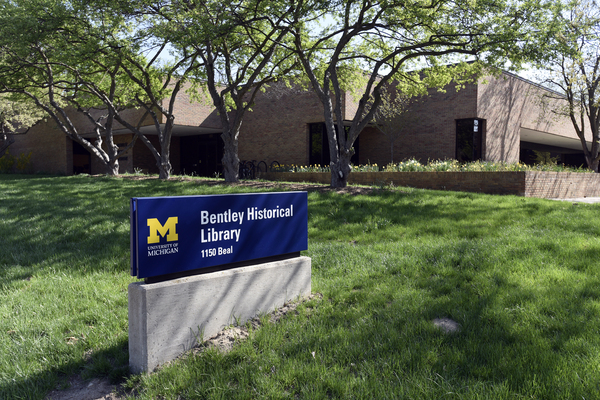Governor of Michigan 1949 to 1960, under-secretary of state for African Affairs from 1961 to 1965, and Michigan Supreme Court justice from 1970 to 1986 and leader in state and national Democratic Party. Papers document his public career and aspects of his personal and family life and include correspondence, subject files, staff files, speeches, press releases and news clippings, photographs, sound recordings, films and videotapes.
The G. Mennen Williams Papers consist of official and personal files arranged into six subgroups: 1) Gubernatorial papers, 1949-1960 (681 linear ft.); 2) Non-gubernatorial papers, 1883-1948 and 1958-1988 (107 linear ft.); 3) Visual materials, ca. 1911-1988 (ca. 25 linear ft.); 4) sound recordings, 1950-ca. 1988 (5 linear ft.) Scrapbooks, 1948-1987 (43 vols.) and State Department Microfilm, 1961-1966 (23 reels).
As part of its own control system, the governor's office maintained a card index to the correspondents in many of the subgroups and series within the gubernatorial papers. This card file is located in the library's reading room. In addition, Nancy Williams and her staff compiled an extensive and detailed run of scrapbooks covering the Williams years. There is a separate inventory to these scrapbooks in a separately bound volume.
Strategy for Use of the Gubernatorial Papers: Although the Williams gubernatorial collection consists of hundreds of linear feet of material, the file arrangement created by the governor's staff is a fairly simple one to understand and to use.
The bulk of the collection falls within specific functional groupings, corresponding to the various activities and responsibilities that Williams performed as governor. Thus, if the researcher is uncertain of what portions of the collection might be relevant to his/her research, he/she is advised to think in terms of gubernatorial function. Does the proposed research concern the workings or area responsibility of a state board? If so, the Boards and Commissions series would be the most likely place in which to find material. The election of 1954? Then Democratic Party/Campaign Papers should be first choice. The passage of a specific piece of legislation? Here, Legislative Files is an obvious choice. The possible choices (called subgroups and series) that the researcher has are listed in the Organization of the Collection section. A description of the contents of each of these subgroups/series is provided below.
If, at first, unsuccessful in finding material on any given topic, the researcher might consider these additional strategies:
1. Refer to the Williams card index (located in the library's reading room). Sometimes, the name of an individual associated with a subject provides the easiest point of access into the collection. This file is arranged alphabetically and lists the dates of letters between an individual and the governor's office. This file only indexes the larger series and subgroups in the collection. It does not index the staff files, or parts of the Democratic Party/Campaign subgroup. Nevertheless it is an invaluable tool, and can uncover important material otherwise buried.
2. Refer to the various series of staff papers. Staff members were often closely involved in a specific subject areas (Jordan Popkin and aging, for example) and thus their files are frequently rich in source material.
3. If only partially successful in locating desired material, the researcher should think of an alternative subgroup or series. The governor's office, for a variety of reasons, often filed related material in different locations depending upon the source of a document. Thus, information relating to a strike might be filed both under the Labor Mediation Board in Boards and Commissions, and Strikes in General Subjects. Furthermore, if the strike influenced a specific piece of legislation, there could be material in the Legislative Files.
